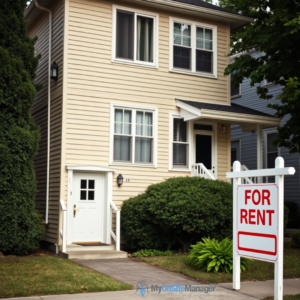A new report from Apartments.com reveals that U.S. apartment rents are showing little movement, even as demand for rentals is on the rise. Why? A historic wave of new apartment construction is flooding the market with fresh supply, keeping rent growth in check and offering renters more choices than ever before.
Record-High Absorption Meets Massive New Supply
In the third quarter of 2024, the rental market saw a surge in activity, with 176,000 more move-ins than move-outs—the highest rate of apartment absorption since late 2021. Despite this strong demand, the national vacancy rate only dipped slightly, down 10 basis points to 7.8%, as developers continue to bring thousands of new units to market.
This year, the U.S. is expected to add 636,000 new apartment units, the largest annual total in four decades. These new completions are keeping the market well-stocked, effectively preventing rents from spiking even as more people look to rent.
Rent Growth Slows Nationwide
Despite the uptick in renter activity, rent growth remains sluggish. Year-over-year rents increased by just 1.1%, a slight drop from the 1.2% growth seen in July. From Q2 to Q3, average rents actually fell by 0.5%, following two previous quarters of modest increases.
The muted rent growth is largely a reflection of the market’s strong supply pipeline. Simply put, while renters are active, landlords can’t raise prices aggressively because they’re competing with so many new apartments coming online—especially in markets with a building boom.
Regional Winners and Losers
The impact of new supply isn’t being felt evenly across the country. Some areas are still seeing steady rent increases, while others—particularly in the Sun Belt—are experiencing notable rent drops.
Top Performing Markets:
-
Washington, D.C.: +3.5% annual rent growth
-
Richmond, VA: +3.4%
-
Detroit, MI: +3.4%
These cities have managed to maintain solid rent growth, likely due to more moderate levels of new construction and steady demand.
Markets Facing Rent Declines:
-
Austin, TX: -4.7%
-
Raleigh, NC: -2.9%
-
Jacksonville, FL: -2.6%
-
Phoenix, AZ: -2.3%
-
Atlanta, GA: -1.9%
Nine of the ten worst-performing rental markets are in the Sun Belt, where rapid construction of high-end, luxury apartments has outpaced demand, creating more competition and forcing landlords to offer concessions or lower rents to attract tenants.
What to Expect for the Rest of 2024 and Beyond
Looking ahead, market conditions are expected to remain highly localized. Factors like geography, price point, and inventory type will play a big role in how rents perform. According to the report, mid-tier rental units and properties in the Midwest and Northeast may outperform their counterparts in oversupplied areas.
In contrast, luxury units and Sun Belt cities could continue to struggle with excess inventory, applying downward pressure on rents in those areas through at least mid-2025.
The Bottom Line
For renters, this environment offers opportunities: more choices, potential incentives, and slower rent increases—especially in areas with abundant new inventory. For landlords and investors, however, it’s a time for careful strategy. Understanding the dynamics of local supply and demand will be crucial for maintaining occupancy and revenue as the market continues to rebalance.
Source: US apartment rents still held down by supply, report says – CoStar

